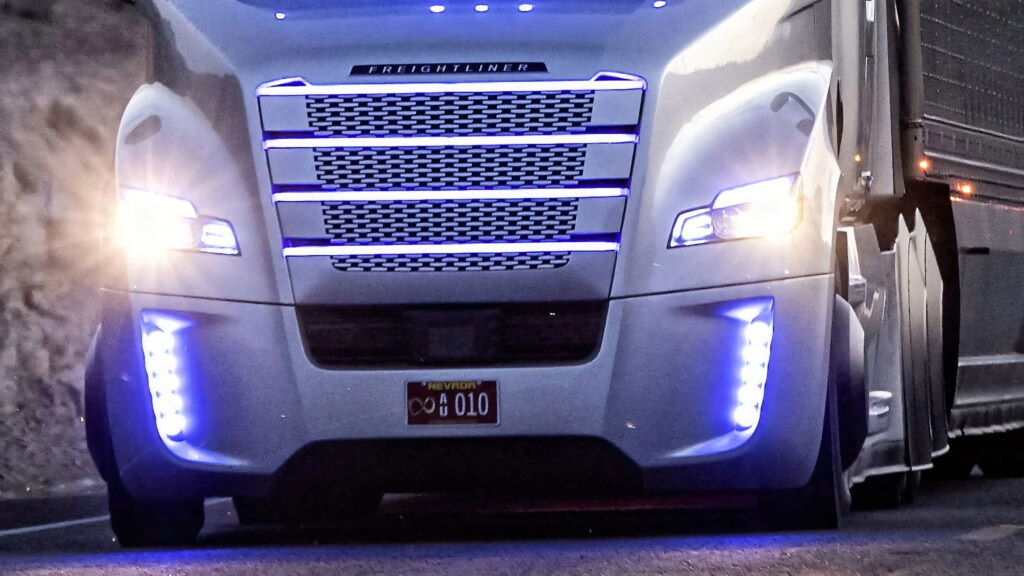What Would a National Law for Autonomous Trucks Actually Change?
Imagine a future where 18-wheelers glide down the interstate—no driver, no hands on the wheel, just sensors and code in charge. That’s the vision behind the America Drives Act, a new bill introduced by Congressman Vince Fong. It’s not just another piece of tech legislation; it’s a direct response to the messy tangle of state laws that currently govern self-driving trucks. Right now, 35 states allow some form of autonomous truck testing, but the rules are all over the map. Some require a human in the cab, others don’t. The result? Companies and regulators are left playing a game of regulatory hopscotch.
If this bill passes, the Department of Transportation would take the reins, setting one clear national standard. Level 4 and Level 5 autonomous trucks—those capable of full self-driving without human intervention—could operate across state lines without a driver or even a remote operator. That’s a big leap from today’s patchwork, and it could open the door for coast-to-coast freight runs powered by algorithms instead of caffeine.
Why Is the Trucking Industry Pushing for Automation Now?
The timing isn’t random. The trucking industry has been sounding the alarm about a driver shortage for years. According to the American Trucking Associations, the industry faced a shortage of over 80,000 drivers in 2023, and that number could double by 2030 if trends continue. The reasons are complicated: high turnover, tough working conditions, and pay that doesn’t always match the demands of the job. Many first-year drivers don’t stick around, leading to a revolving door that makes it tough to keep trucks on the road.
Autonomous trucks, at least in theory, could help fill that gap. They don’t need sleep, bathroom breaks, or weekends off. They’re immune to burnout and don’t call in sick. For companies struggling to staff long-haul routes—especially the less desirable ones—automation looks like a lifeline.
But here’s the twist: not everyone agrees on the root of the problem. Some labor groups argue it’s not a shortage of people willing to drive, but a shortage of companies willing to pay enough to keep them. Teamsters President Sean O’Brien has been vocal about the need for job protections if automation moves forward, pointing to labor agreements at ports that balanced efficiency with worker security. The debate isn’t just about robots replacing humans—it’s about how to make the transition fair for everyone.
How Would the Law Affect Safety and Regulations?
One of the most eye-catching aspects of the America Drives Act is how it would rewrite the rulebook. Federal safety regulations, as they stand, are built around human drivers. Think hours-of-service limits, mandatory rest breaks, and drug testing. Autonomous trucks don’t get tired or take substances, so those rules don’t really apply. The bill would codify a 2018 interpretation that says a human isn’t required behind the wheel, and it would direct regulators to update the rules for automated driving systems by 2027.
That sounds straightforward, but it raises some tough questions. Who’s responsible if a driverless truck is involved in a crash? How do you ensure the technology is safe enough for public roads? Europe and China are already moving ahead with national frameworks for autonomous freight, but the US has lagged behind, in part because of these unresolved issues. The new law aims to catch up, but it’ll need to balance innovation with public safety—no easy feat.
What Are the Economic and Social Impacts?
Let’s talk dollars and sense. The US moves about 72% of its freight by truck, according to the Bureau of Transportation Statistics. Delays, inefficiencies, and labor shortages ripple through the entire economy, from grocery store shelves to manufacturing lines. Proponents of the bill argue that a national framework for autonomous trucks could boost efficiency, reduce costs, and make supply chains more resilient.
But there’s a flip side. Automation could disrupt hundreds of thousands of jobs. The Bureau of Labor Statistics estimates there are over 2 million heavy and tractor-trailer truck drivers in the US. While some roles might shift—think technicians, remote monitors, or logistics planners—many could disappear entirely. That’s why labor leaders are pushing for guarantees: retraining programs, job placement assistance, and a seat at the table as the technology rolls out.
Is the Technology Ready for Prime Time?
Here’s where the rubber meets the road. Autonomous trucking has made huge strides in the last five years. Companies like Aurora, Waymo, and TuSimple have logged millions of test miles, and pilot programs are already hauling freight on select routes. Still, the technology isn’t perfect. Weather, unpredictable drivers, and complex urban environments remain big challenges. A 2024 RAND Corporation report found that while autonomous trucks could reduce certain types of crashes, they might also introduce new risks if not carefully regulated and tested.
Public trust is another hurdle. A Pew Research Center survey from late 2023 found that only 26% of Americans were comfortable sharing the road with driverless trucks. That number will need to climb if the technology is going to gain widespread acceptance.
What’s Next for Autonomous Trucking in the US?
The America Drives Act isn’t a magic bullet, but it’s a significant step toward a future where self-driving trucks are a common sight on American highways. The big questions—about safety, jobs, and economic impact—won’t be settled overnight. But one thing is clear: the status quo isn’t working, and the country can’t afford to fall behind as other nations modernize their freight networks.
The big takeaway? Navigating the future of autonomous trucking isn’t about perfection—it’s about smarter adjustments. Start with one change this week, and you’ll likely spot the difference by month’s end.

